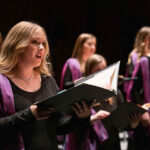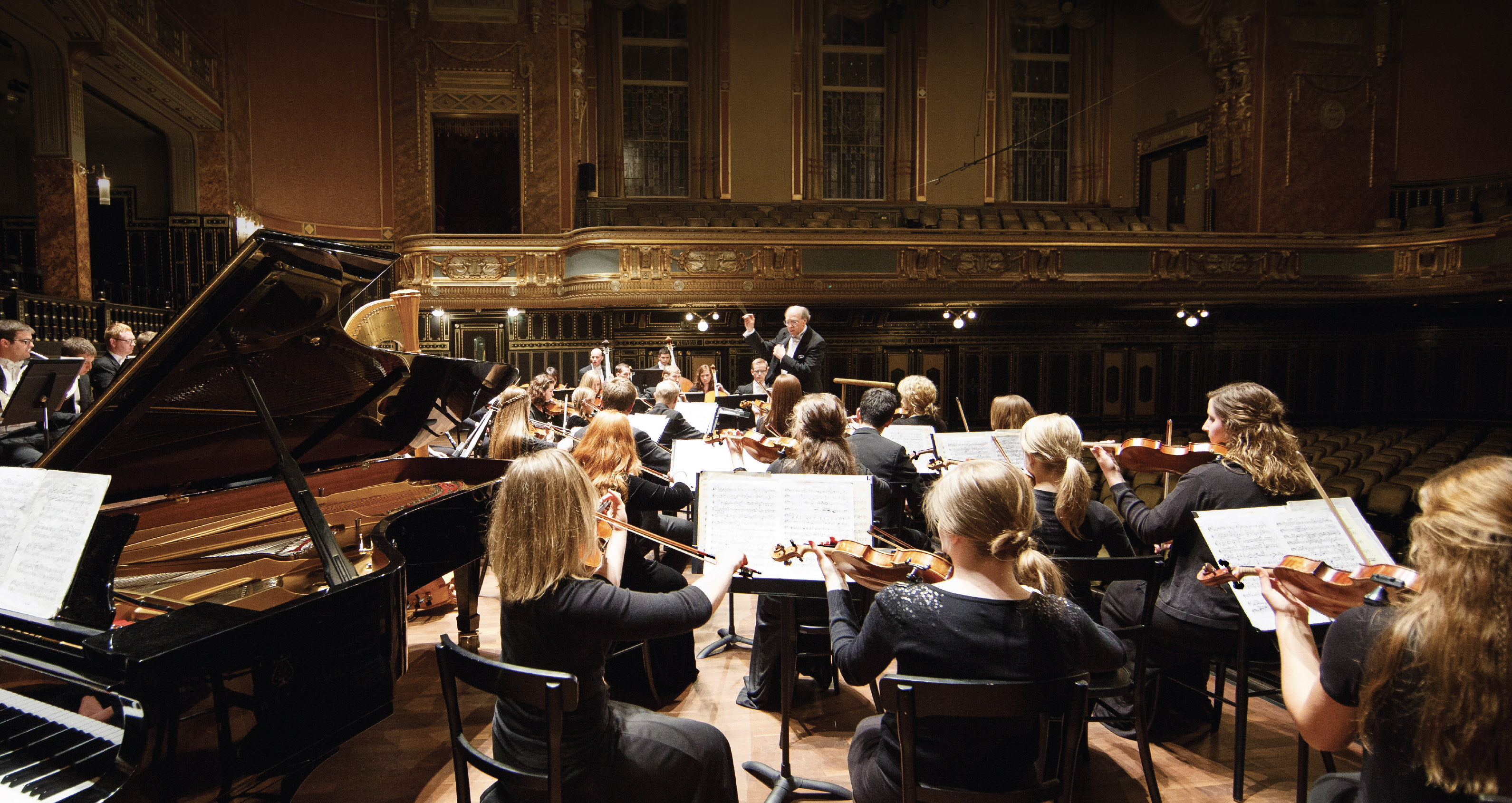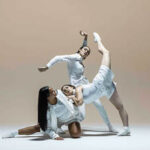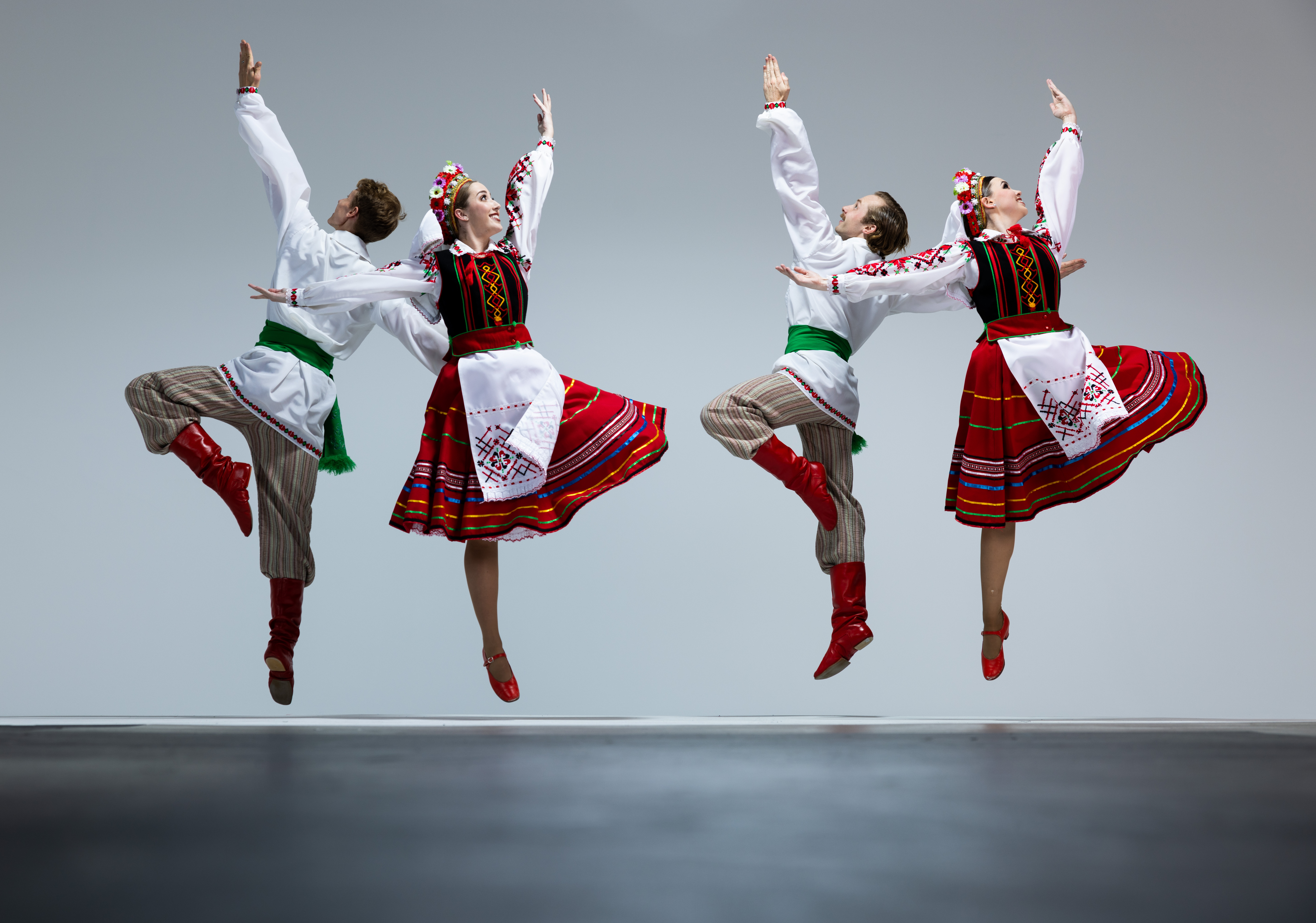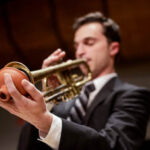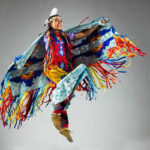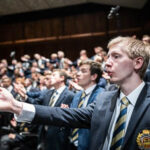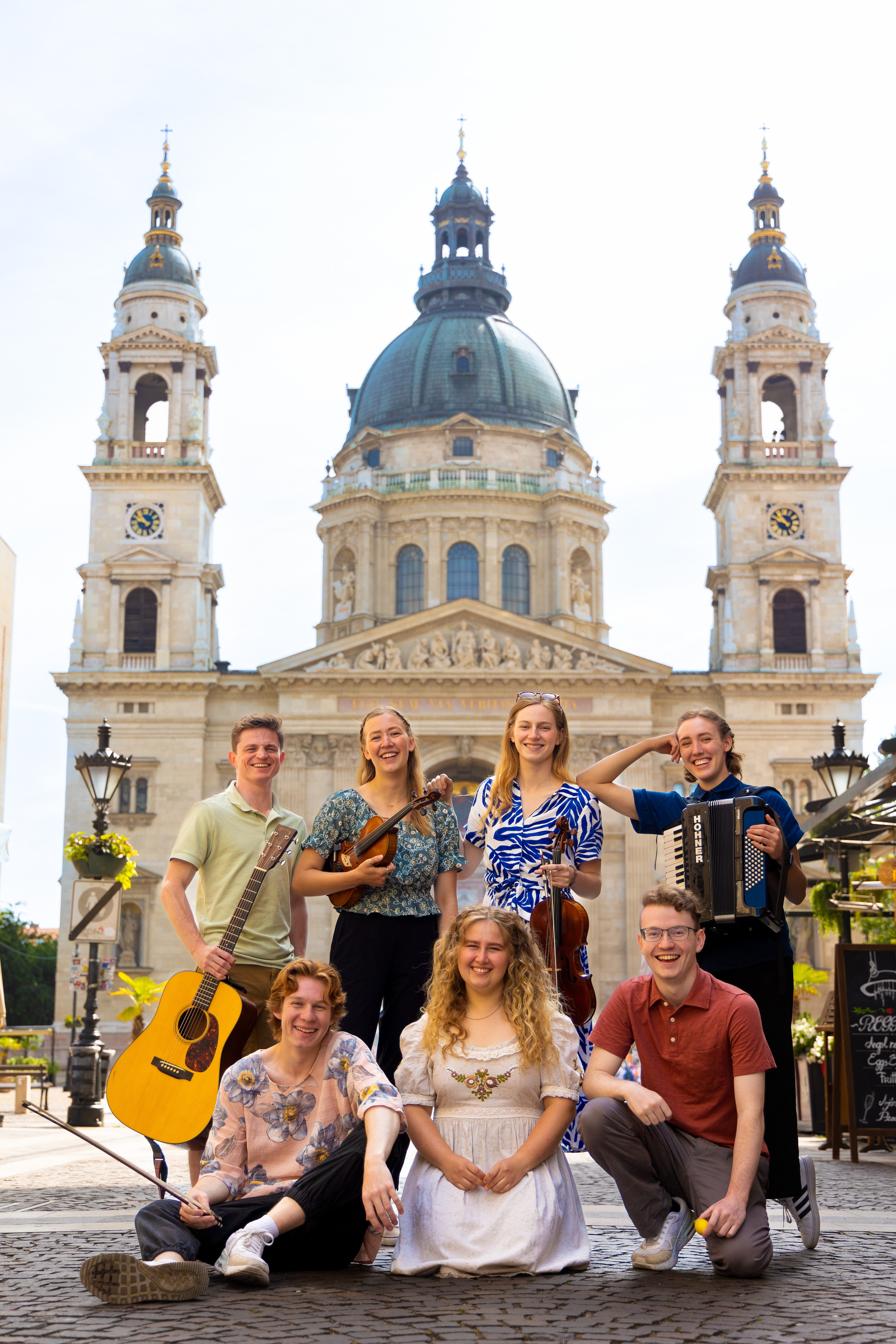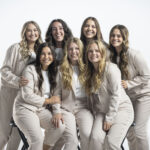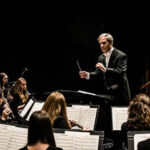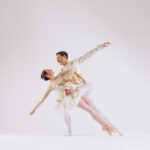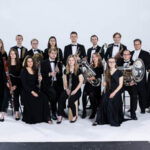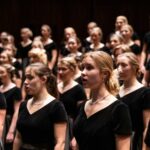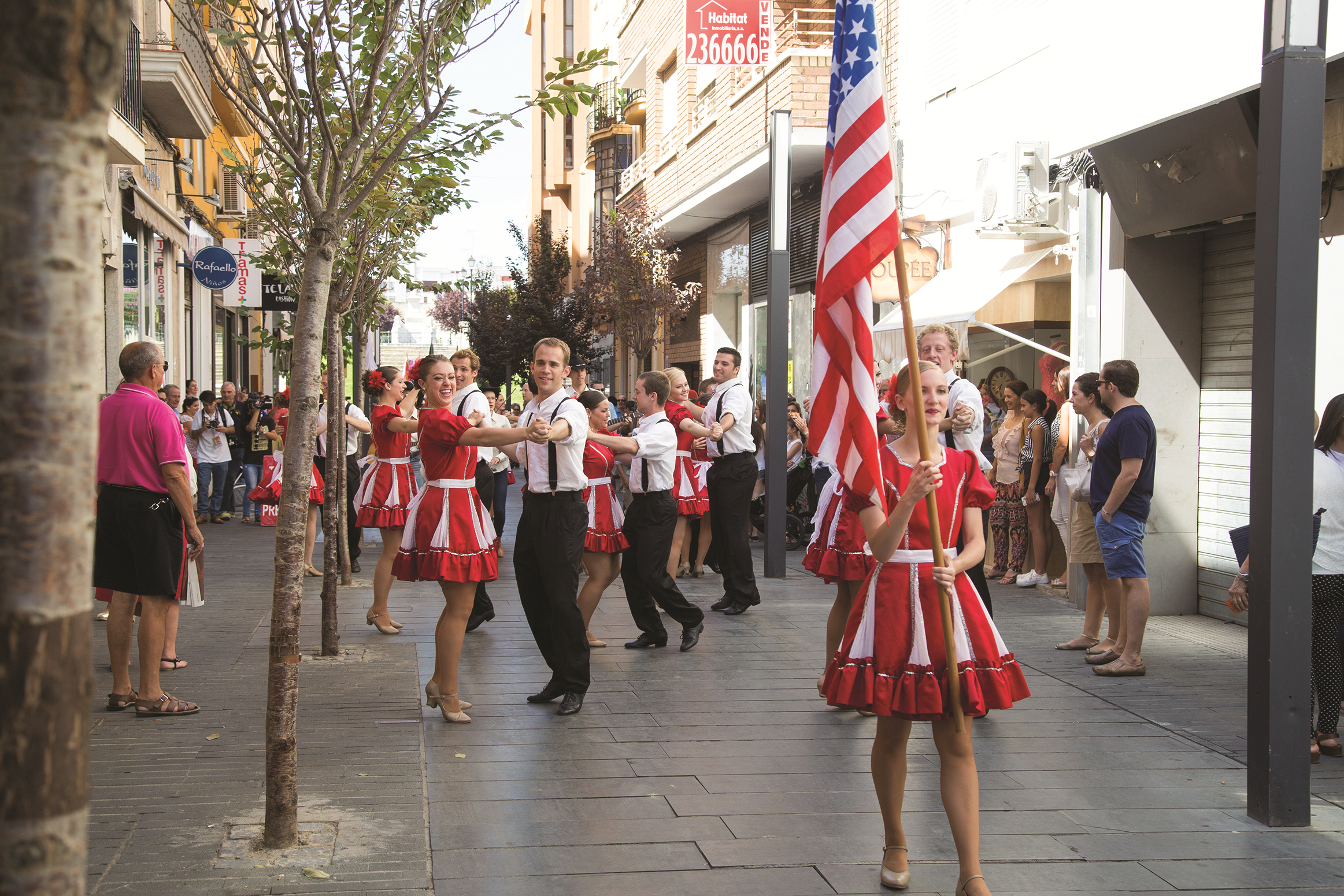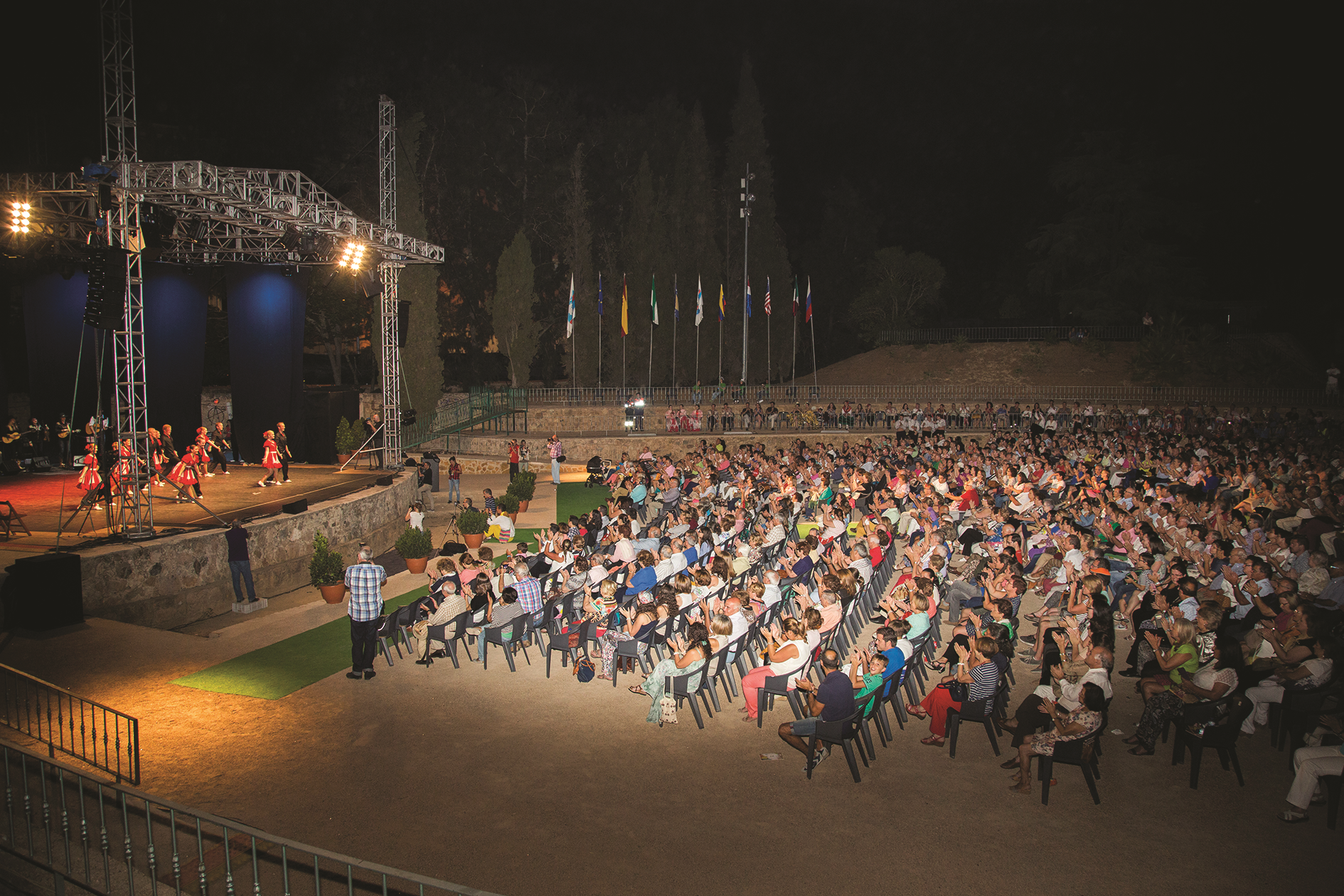
Folk Dance Ensemble performs onstage at the closing ceremony of the Extremadura International Folk Festival in Badajoz, Spain.
“If you appreciate what people value, they will come to love you,” an audience member in Croatia said to a member of BYU Folk Dance Ensemble. Performing under the name of American Folk Dance Ensemble, the group found plenty to appreciate in its travels in Croatia and Spain this summer. They represented the United States in three folk festivals, where castle courtyards, town squares, city streets, rest homes, and outdoor stages provided picturesque backdrops to their shows. Each festival began with a parade through the city streets in which the ensemble danced under the U.S. flag and occasionally stopped for pictures with onlookers. Through music and dance, the ensemble learned to love the Croatian and Spanish cultures while sharing their own traditions with the people they met.
The team began at the International Folklore Festival in Karlovac, Croatia. While at the festival, members of Folk Dance learned a traditional Croatian dance from Dražen Makarun, director of the Matija Gubec Croatian Dance Ensemble. Dressed in authentic, hand-embroidered Croatian costumes, the BYU students received a standing ovation after their performance in the finale of the closing ceremonies.
Performer Michael Kim felt appreciation from the Croatian audience for learning the dance: “You got the sense that they were saying, ‘The Americans are doing our dance! This is great!’”
The ensemble spent the next week at the 39th annual “Ciudad de Burgos” International Folklore Festival in Spain. They performed each night for a capacity audience of 4,000 people, and each performance was broadcast to an estimated three million viewers.
One notable performance was the powerful joint number between the Americans and the Cubans. The collaboration was featured on the local broadcast news and in the newspaper because of recent relations announced between the two countries. “The best part of these festivals is that you are not there to compete,” says band performer Talmage Haines. “You can go to perform and appreciate the performances of others.”
The team danced in some unconventional spaces, including the courtyard of a castle built in the 1400s. During one community outreach, the group taught traditional American line and round dances to 150 children. “Being in a courtyard or town square means you can make eye contact with the audience,” Haines says. “You can make funny faces at the kids. You put a lot more energy into facial expressions and interactions with the dancers. They might not be able to hear across the space, so you have to perform with your body as well as your instrument.”
For the Extremadura International Folk Festival in Badajoz, Spain, the team performed in a different neighboring village every day. According to student band performer Carrie Ostler, this was the pattern for most of the tour. “We’d get on a bus and they would drop us off in the middle of the Croatian or Spanish countryside,” she says. “It was a treat to be part of an effort to travel as far out as possible to where people do not have as much exposure to the performing arts. You could be a guy sitting in the park and unexpectedly have this amazing experience with American dancers.”
In addition to engaging in outreach programs for local communities, Folk Dance was privileged to share the stage with teams from Russia, Croatia, Taiwan, Bosnia and Herzegovina, Mexico, Colombia, and Spain. They learned dances native to the other countries and played music with the other teams.
The ensemble explored several neighboring cities as well, including Venice, Córdoba, and Madrid. In Spain they were given guided tours by former BYU College of Humanities dean John Rosenberg (in Toledo) and by Lorum Stratton from the Texas Tech Study Abroad program (in Seville). The students also enjoyed a workshop from professional flamenco dancers.
The dancers returned home with a deeper respect for their host countries as well as for those countries whose teams they performed with. And the advice held true: as they came to appreciate and add to the beauty of the countries they visited, Folk Dance members felt love from their audiences.


